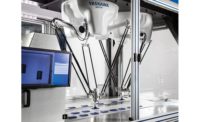Software & Analysis
Simple Steps for Measuring and Ensuring ERP Success
Many companies start their ERP search without knowing what they want to accomplish

ERP suppliers put a lot of time and effort into keeping the underlying technology up to date. Source: QAD

It’s vital that the ERP project be run with as much care and attention as the company’s other critical projects. Source: QAD

Remember that less is more when it comes to ERP systems. Source: QAD



People often talk about the high failure rate for software implementation projects. Stories abound about failures in CRM, MES, SCM and QMS, but the stories are especially disturbing when they involve ERP. Panorama Consulting research shows that in 2015, about 46% of companies polled said they received 50% or less of the expected benefits from their ERP system.
ERP systems are so pervasive throughout an organization and so fundamental to its ability to function and compete that ensuring project success should be a given.
But it’s not.
TECH TIPS
|
START WITH THE SEARCH PROCESS
The primary reason success is not a given in ERP implementations is that many companies don’t know how to select the right ERP system for their business or how to measure its success.
Many companies start their ERP search without knowing what they want to accomplish. They spend a lot of time and resources developing a long wish list of functionality. The list usually includes a mix of basics—capability any ERP system in the market would have to offer—and process descriptions that may or may not reflect industry best practices.
These companies would be better served to identify the three to five key processes that differentiate them from their competition. Identification of the business process should include the metric that the company uses to measure itself, and its objective for that metric.
For example, if the company prides itself on shipping within four hours, the judgment criteria should be the simplicity of the order to shipment process. They should also look for a near-real-time feedback loop that provides insight on their performance to the objective.
They should then evaluate their short list based on the flexibility and adaptability of the functionality that supports these few true differentiating business processes. Reference checks and site visits may follow, but they should focus only on these key processes.
The ERP suppliers won’t like this, because they will want to show off their extensive lists of Key Performance Indicators (KPIs), the flexibility of their in-memory analytics, and the hundreds of items on their menus. None of which matter to ERP success if the differentiating business process isn’t as lean and tight as it can possibly be. The key processes need to be optimized for current business conditions, and they must also evolve as the business changes. The reason for restricting the processes under review during the buying cycle is that it enables people to evaluate possible solutions objectively and on a reasonable number of factors. Nobody can keep the thousands of data points in a typical RFP or ERP demonstration straight, and most of the details won’t matter once the company starts using the new system. But the three to five differentiating business processes will continue to matter.
THE IMPLEMENTATION PROCESS IS THE NEXT HURDLE
Many ERP providers and implementation consultants suggest or enforce the use of industry templates during the project. The reason they will give is that it helps companies to adopt industry specific best practices, but the reason is often that it’s actually the only way they know how to do it.
This is perfectly acceptable—even desirable—for most business processes, but not for the differentiating processes identified before the sales process even started. It makes no sense to operate differentiating business process in the same way as competitors, because then they cease to differentiate.
For those critical processes, the company should take the time to understand all the options and run through multiple tests until they are certain they have the best possible solution for the way they do business today. But it’s important to remember that not every business process is a differentiator. For basic operating procedures, it’s best to go with the ERP vendor’s recommended best practice.
It’s best to use an experienced project manager from inside the company, but if none exists, a knowledgeable employee working with an outside project manager is the next best solution.
It’s vital that the ERP project be run with as much care and attention as the company’s other critical projects. The company can’t skimp on resources or training and expect the project to come in on time and on budget.
Those two are the first metrics for ERP success, and they should be taken extremely seriously.
During the implementation, each department should identify their departmental key metrics to be measured along with the company’s strategic metric. In no case should any department have more than five metrics—and three is better. It is not possible to manage too many metrics.
Each department should pick only the KPIs that really matter to its performance and decide on the goal for each metric. It’s best if they relate in some way to the strategic differentiating metrics. For example, if the differentiator is same day delivery of popular products, the metric might be inventory on hand, forecast to actual orders or even production cycle time, depending on the department. Measure baseline performance for the metrics using the same inputs and calculation method planned for the future.
This goal-setting step should not be taken lightly. It is the most frequently overlooked part of ERP implementations, and omitting it is a big step toward ERP failure.
COMMIT TO CONTINUOUS IMPROVEMENT
Once the ERP solution “goes live,” many companies sit back, dust off their hands and say “My work here is done.” This is especially true if the project managed to come in on time and on budget.
However, no matter what happened during the project, this is exactly the attitude that will spell failure for ERP. In fact, the hard work is only just beginning.
Many ERP failures occur because the company’s business processes have changed over time—sometimes even before the implementation is finished. That’s why verifying the flexibility and adaptability of the differentiating processes is so important upfront. As much as possible, the ERP process should match the physical process flow, and the ERP process should change and flex as the physical process evolves. If the key ERP processes remain stagnant, the company will find themselves on a downward spiral of incorrect entries, missed entries, poor data quality—and ERP failure.
The company needs to start looking at its three to five most important business processes and the associated metrics to look for potential improvements immediately after the go live. Just as lean practitioners on the factory floor dedicate time and energy to continuous improvement, so must the ERP team.
Whether the company assembles a Kaizen team to look at the process steps, uses brown craft paper and string taped to the walls or process flow-charting software, the objective should be the same. Honing those key processes to the peak of efficiency should be the goal, and it is a process that should never end.
Make only one change at a time. Make the iterations fast, and measure the defined KPIs after each change to be sure there has actually been an improvement. Keep going. Never stop looking for ways to eliminate waste.
WHAT IF NO NEW ERP DECISION IS IN THE CARDS?
Companies keep their ERP systems for an average of ten to 15 years, according to Dave Turbide, noted ERP expert, but that doesn’t mean all those companies can’t continue to reap the benefits of their ERP systems.
The first step should be to make sure the company is on the most recent version of the ERP system. ERP suppliers put a lot of time and effort into keeping the underlying technology up to date, and they add functionality to keep pace with changes in accepted business practices and regulatory requirements. Simply upgrading may provide a boost to performance on key metrics.
Next, identify the differentiating business processes that form the core of the company’s strategy. Map out the current state, and start working on the ideal “to be” state. Again, move fast. Don’t succumb to “paralysis by analysis.” Make one change at a time, and measure.
Whether the company is looking for a new ERP system or trying to eke out the last few years of an existing solution’s useful life, remember that less is more when it comes to ERP systems. Don’t try to use every available KPI. To maximize the chances of success, focus only on the metrics that truly reflect the company’s strategy and do whatever it takes to maximize performance on those. Q
Looking for a reprint of this article?
From high-res PDFs to custom plaques, order your copy today!







